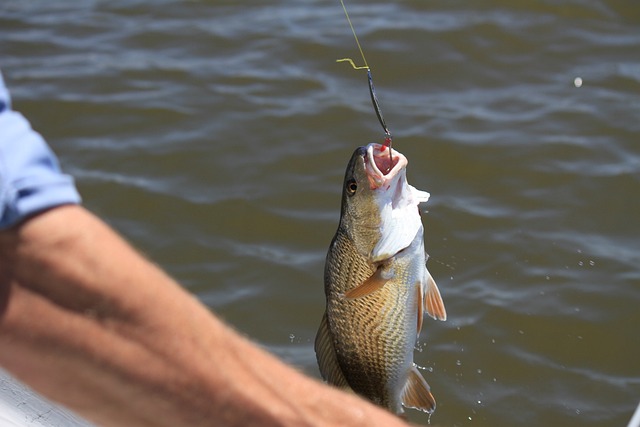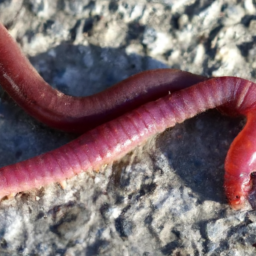Are you curious about the different types of fish you can catch in freshwater? Well, you’re in luck! Freshwater fishing offers a wide variety of fish species for you to target. Whether you’re an experienced angler or just starting out, there’s something for everyone in freshwater fishing. In this article, we’ll explore the diverse range of fish that inhabit freshwater lakes, rivers, and streams. So sit back, relax, and get ready to dive into the fascinating world of freshwater fishing.
When it comes to fishing in freshwater, the options are abundant. From the popular game fish like bass, trout, and catfish, to the lesser-known species like crappie, walleye, and muskie, you’ll never run out of options to explore. Each species has its own unique characteristics and behaviors, which adds to the excitement and challenge of fishing. So whether you prefer the thrill of reeling in a large-mouth bass, the delicate art of fly-fishing for trout, or the strategic skill required for catching catfish, freshwater fishing has something for everyone. Stay tuned for the upcoming article, where we’ll dive deeper into the specifics of each species and share some expert tips on how to hook the catch of a lifetime.
Popular Freshwater Fish Species
Freshwater fishing offers a wide array of fish species to target, each with its unique characteristics and allure. Whether you are a seasoned angler or a beginner, exploring the world of freshwater fishing can be an exciting and rewarding experience. In this article, we will take a closer look at some of the most popular freshwater fish species, their characteristics, habitats, and fishing techniques.
Bass
Bass are one of the most sought-after freshwater fish species, known for their exciting fights and impressive sizes. They come in various types, including largemouth bass, smallmouth bass, and spotted bass. Bass usually have a greenish or brownish color with dark horizontal stripes along their bodies.
Bass can be found in a variety of habitats, from lakes and rivers to creeks and ponds. They prefer areas with cover such as submerged vegetation, fallen trees, and rocky structures. When fishing for bass, it is essential to use baits and lures that mimic their natural prey, such as crayfish, worms, and small fish.
Different fishing techniques can be effective for bass, including casting, flipping, and topwater fishing. Casting involves casting your bait or lure near potential bass hiding spots and retrieving it slowly. Flipping is a technique where you pitch your bait or lure into heavy cover and let it sink before slowly reeling it in. Topwater fishing is particularly exciting, as it involves using floating lures and imitating the movements of injured prey on the water’s surface, causing the bass to strike.
Trout
Trout are highly prized for their delicious taste and exciting fight. They are known for their colorful, streamlined bodies and can be found in both freshwater streams and lakes. There are various types of trout, including rainbow trout, brown trout, and brook trout, each with its distinct characteristics and habitats.
Rainbow trout are the most common and widely stocked species, known for their vibrant pink and green colors. Brown trout are known for their elusive and cautious behavior, making them a challenge to catch. Brook trout, also known as speckled trout, prefer cold, clean water and can be found in mountain streams.
Trout prefer habitats with clean, oxygen-rich water and ample cover, such as submerged rocks and fallen trees. When it comes to bait and lures for trout fishing, options include live bait such as worms or minnows, artificial flies, spinners, and small spoons.
Fly fishing is a popular technique for trout fishing, where anglers use lightweight fly rods and delicate flies to imitate insects floating on the water’s surface. The technique requires skill and precision, making it a favorite among passionate anglers.
Catfish
Catfish are bottom-dwelling fish known for their distinctive barbels, or “whiskers,” surrounding their mouths. They can grow to impressive sizes and are prized for their taste. There are several types of catfish, including channel catfish, blue catfish, and flathead catfish, each with its unique characteristics and habitats.
Channel catfish are the most common type, known for their good-natured attitude and willingness to bite. Blue catfish are known for their immense size and strength, making them a formidable challenge for anglers. Flathead catfish prefer living in deep, slow-moving rivers and are known for their impressive fighting abilities.
Catfish can be found in a variety of habitats, including rivers, reservoirs, and lakes. They are primarily bottom-feeders, relying on their keen sense of smell to locate their prey. When fishing for catfish, popular baits include live or dead fish, shrimp, and stink baits.
Catfish can be caught using various fishing techniques, including bottom fishing, drifting, and targeting specific structures such as submerged logs or holes. Bottom fishing involves placing your bait on or near the bottom and waiting for a catfish to take the bait. Drifting involves casting your bait upstream and allowing it to drift naturally with the current, increasing the chances of attracting a hungry catfish.
Salmon
Salmon are prized for their strength, agility, and delicious taste. There are several species of salmon, including Chinook salmon, coho salmon, and sockeye salmon, each with its unique characteristics and migration patterns.
Chinook salmon, also known as king salmon, are the largest species and are famous for their impressive size and feisty nature. Coho salmon, also known as silver salmon, are known for their acrobatic jumps and silver coloration. Sockeye salmon, also known as red salmon, have a vibrant red color and are known for their delicious taste.
Salmon are anadromous fish, meaning they are born in freshwater, migrate to the ocean to grow, and return to freshwater to spawn. They can be found in rivers and lakes, primarily in regions near the coast.
When fishing for salmon, it is essential to have the right equipment and techniques. Popular fishing methods include trolling, casting, and fly fishing. Trolling involves trailing bait or lures behind a moving boat, allowing you to cover a large area and target salmon at various depths. Casting involves casting your bait or lures near salmon holding areas, such as eddies or log jams, and retrieving them with varying speeds and movements. Fly fishing for salmon requires specialized gear and is known for its elegance and finesse.
Walleye
Walleye are highly sought-after fish known for their delicious white flesh and challenging nature. They have a distinct appearance, with sharp teeth, large eyes, and olive-green coloration. Walleye can be found in various bodies of water, including lakes, rivers, and reservoirs.
Walleye prefer habitats with rocky structures and ample cover, such as submerged vegetation or drop-offs. They are most active during low-light conditions, such as dawn and dusk, making them popular targets for night anglers.
When it comes to bait and lures for walleye fishing, options include live bait such as minnows or nightcrawlers, artificial jigs, crankbaits, and spinnerbaits. Effective techniques for walleye fishing include trolling and jigging. Trolling involves slowly moving your boat while trailing bait or lures behind, allowing you to cover a large area and locate active walleye. Jigging involves bouncing a weighted lure near the bottom and attracting walleye with small, jerky movements.
Crappie
Crappie are small, panfish species known for their delicious taste and the thrill of catching large numbers. The two most common types of crappie are black crappie and white crappie. They have a thin, disk-shaped body and are usually silver or white, with black spots along their sides.
Crappie can be found in a variety of habitats, including lakes, rivers, and reservoirs, where they seek cover and structure, such as submerged trees or vegetation. They are most active during the spring and fall, making those seasons ideal for crappie fishing.
When it comes to baits and lures for crappie fishing, options include live minnows, small jigs, soft plastic baits, and tiny spinners. Jigging and bobber fishing are popular techniques for crappie fishing. Jigging involves casting or dropping a small jig near submerged cover and using various movements to attract crappie. Bobber fishing, also known as float fishing, involves suspending your bait below a bobber and waiting for it to be taken by a crappie.
Other Notable Freshwater Fish
While bass, trout, catfish, salmon, walleye, and crappie are popular freshwater fish species, there are other notable fish you can encounter during your fishing adventures. These include perch, pike, muskellunge, and bluegill. Each of these fish has its unique characteristics, habitats, and fishing techniques, adding diversity to your freshwater fishing experiences.
Fishing Regulations and Conservation
When participating in freshwater fishing, it is essential to be aware of fishing regulations and practice responsible fishing to ensure the sustainability of fish populations and their habitats. Fishing regulations may vary depending on the region and specific bodies of water. It is crucial to be familiar with license requirements, fishing limits, and catch and release practices.
By following fishing regulations and practicing responsible fishing, you can contribute to the conservation efforts aimed at preserving our freshwater ecosystems for future generations to enjoy.
Conclusion
Freshwater fishing offers a diverse range of fish species to target, each requiring specific knowledge and skills. Whether you are targeting bass, trout, catfish, salmon, walleye, or crappie, understanding their characteristics, habitats, and feeding habits can enhance your fishing experience. Remember to always follow fishing regulations, obtain the necessary licenses, and practice responsible fishing practices to ensure the sustainability of our freshwater ecosystems. Happy fishing!


